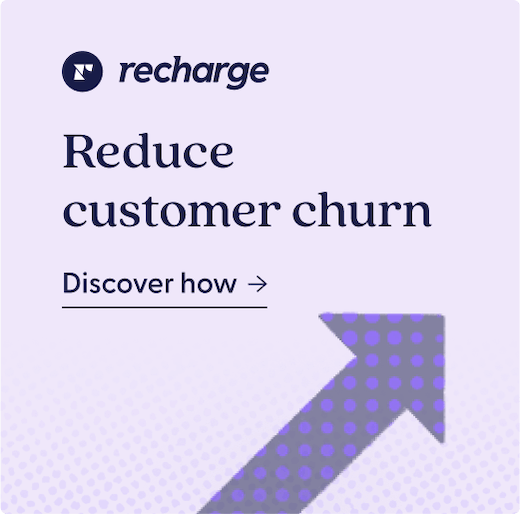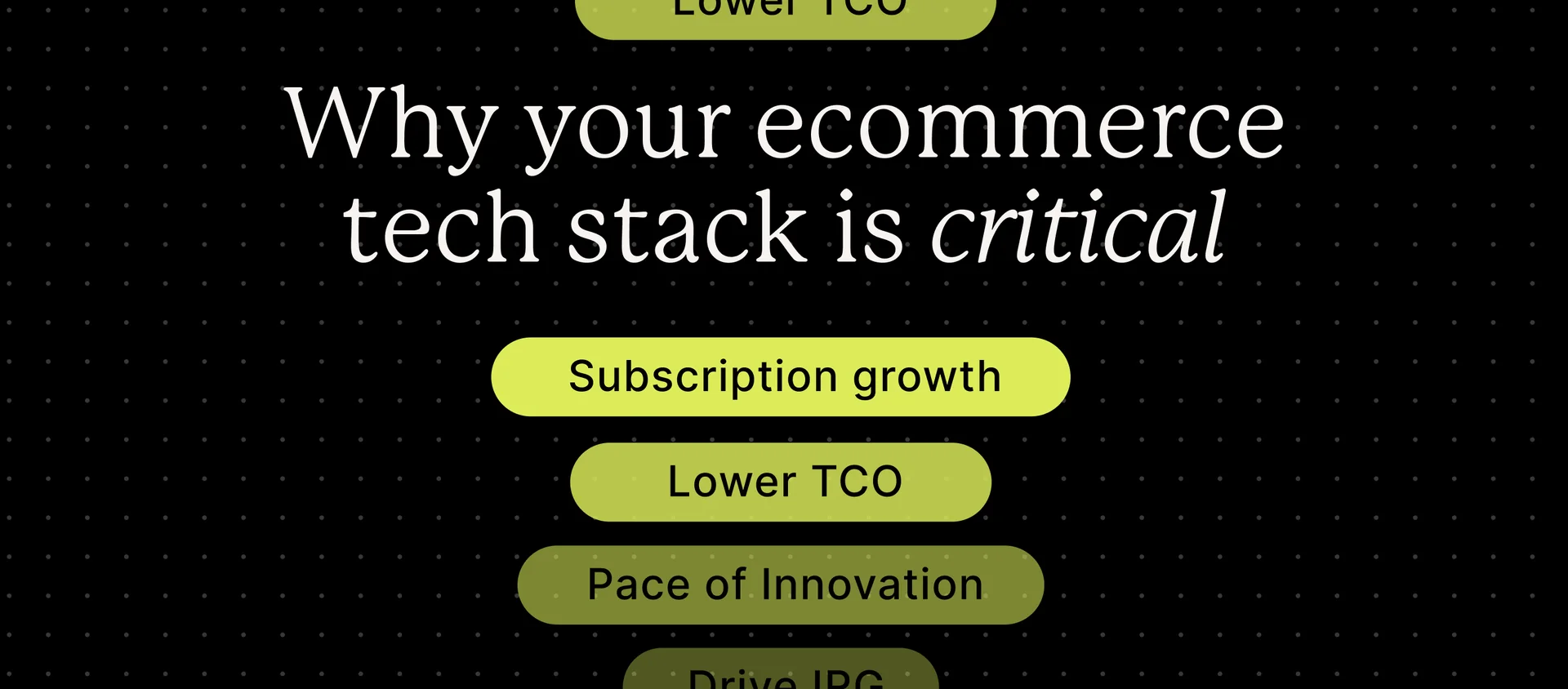Business growth doesn’t happen by accident. The top ecommerce brands get there by developing a comprehensive growth strategy to attract, convert, and retain customers, then executing it with precision.
With consumer behaviors shifting rapidly and competition growing fierce, it’s never been more important to enter the market with a solid strategy. A good one will encompass every aspect of your business from UX to marketing to process automation. Let’s take a look at some of the most useful tactics an ecommerce business can use to scale today.
Key takeaways
- To scale effectively, ecommerce brands need to devise and execute a comprehensive strategy.
- A good growth strategy should include components aimed at bringing customers in, converting them, and retaining them.
- Common and effective tactics include referral marketing, social media presence, subscriptions, UX upgrades, and more.
Why you need a comprehensive ecommerce growth strategy
If you’re serious about scaling, you won’t get there by focusing on just one aspect of your business. When its other aspects fall out of step, your customer journey and experience are likely to feel disjointed and incomplete, losing you customers before you can land a sale—and burning the resources you’ve invested in them.
On the other hand, a brand with a well-rounded strategy is greater than the sum of its parts. Investments in marketing will raise your profile and bring more shoppers in; investments in your customer experience will lead to higher conversion; and personalized touches and good service will lead to higher customer retention. With every area covered, you’ll be able to build a steady pipeline of revenue and keep scaling.
Foster word-of-mouth and referral marketing
Happy customers are a brand’s best advocates. Encouraging word-of-mouth marketing with referral programs can generate high-quality leads with minimal ad spend.
Offer referral incentives
A referral program isn’t just a good way to gain new customers. It can even help you retain existing ones. Provide customers with referral links or codes that they can offer to friends and family, complete with first-order discounts to sweeten the deal—that’s how you bring new shoppers in the door.
Then, when one of your customers successfully completes a referral, reward them with incentives like discounts, store credits, or exclusive perks. They’ll be happy to stick around.
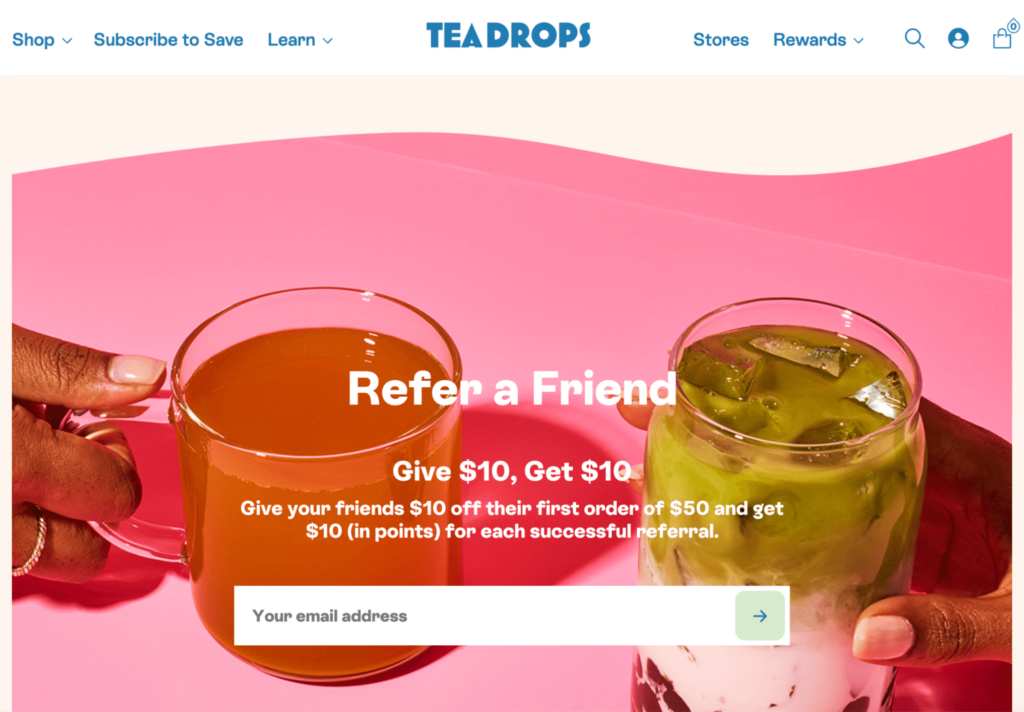
Encourage user-generated content (UGC)
Authenticity is everything. Curious shoppers are more likely to convert when they know that real people just like themselves have used and enjoyed your products.
Even if you’re producing stellar marketing materials on your own, UGC provides a personal touch that’s difficult to match. Try encouraging customers to share reviews, testimonials, and social media posts to bridge the gap.
Reward loyalty from existing customers
Rewards programs are a proven way to keep customers around for the long haul. But don’t stop at implementing a basic points-for-purchases scheme—mix and match engaging incentives like account credits, free gifts, and discounts so there’s always another reason for loyal customers to stick around.
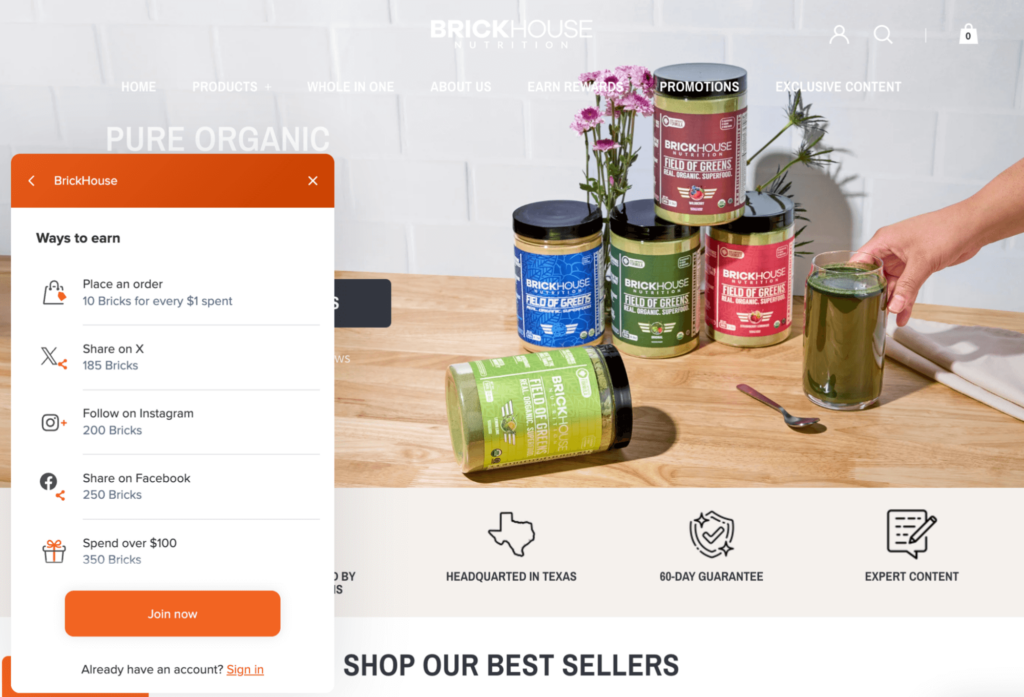
Implement (and prioritize) subscriptions
Most ecommerce businesses dream of steady, dependable revenue streams. For that, you need repeat customers; for many, the solution is subscriptions.
A typical subscriber provides as much revenue as about three non-subscribing customers in just their first year. Many provide even more. A thoughtful subscription program could provide your brand with huge advantages in customer loyalty and retention.
Go subscription-first
Making subscriptions the default purchase option tells customers that they’re the ideal way to purchase your products, and it takes the friction out of signing up. To make them even more appealing, add discounts for recurring orders, including an even steeper discount on the first order to make it an easy choice.
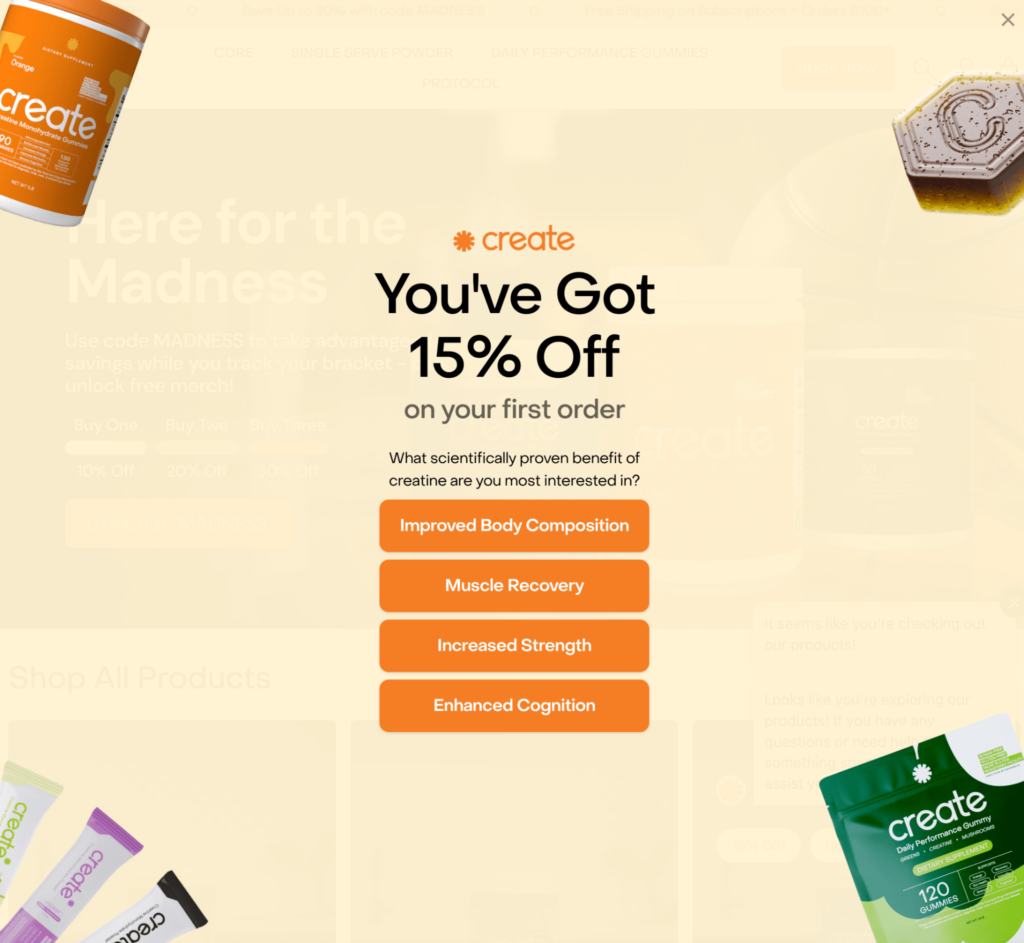
Provide flexible options
Subscriptions are valuable to customers because they’re convenient. A subscription configuration that’s rigid or limited will quickly become inconvenient and earn a cancellation. Make it easy to pause, adjust, or skip orders to keep customers around long-term.
Help subscribers discover your catalog
A customer’s first subscription is your first step toward catering to their entire routine. Try adding cross-sell offers at touchpoints like checkout or in emails about upcoming orders—they’re the perfect way to showcase complementary products.
Excel at customer service
It’s hard to oversell the value of quality customer service. Data from Salesforce (published via Hubspot) paints a compelling picture:
- 88% of customers say good customer service makes them more likely to purchase again
- 75% say they’ve recommended a company based on excellent customer service
- 80% say the experience a company provides is as important as its product or services
Accessible, effective service can make the difference between purchase and abandonment. Earn brand loyalty by giving customers easy access to the answers they need.
Offer multiple contact points & solutions
There’s no one service solution that will meet all of your customers’ needs. Email is a good start, but it may be too slow for customers who need quick resolutions and too involved for those with smaller issues.
The ideal approach is to offer a wide array of service options, including quick, light-touch options like chat and self-service options like a help center with documentation and resources.
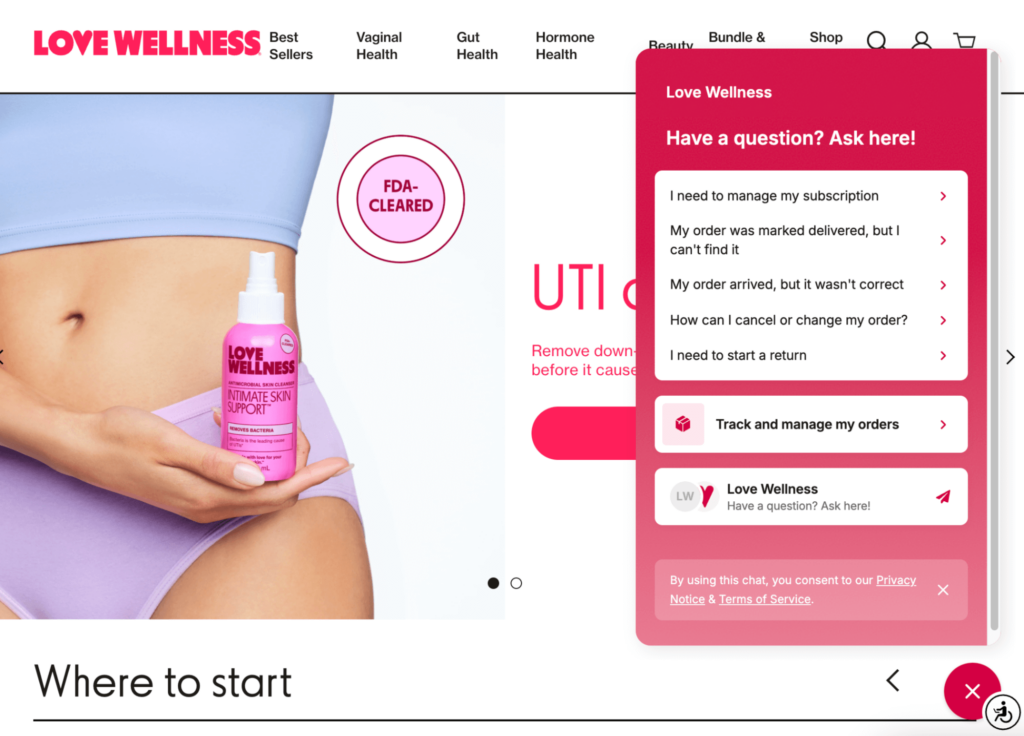
Try an always-on chatbot
Automated, AI-powered chat bots may not be a silver bullet for customer service, but they have some important advantages. They’re instantly available to customers 24/7, and they excel at transactional tasks like basic account or order management.
Consider implementing a bot to handle frontline requests and free up your service team for issues that require a more personalized approach.
Personalize journeys through your online store
Every customer has unique needs and preferences. Scaling an ecommerce business doesn’t mean providing a one-size-fits-all experience for every customer; it means tailoring each customer’s experience to them specifically.
Recommend products dynamically
Use what you know about your customers’ shopping habits to suggest more relevant items, either as they shop or in between orders.
Personalization is crucial here. A relevant recommendation can feel like you’re helping a customer solve a problem; miss the mark and it’s more likely to feel like you’re trying to stuff their cart.
Target customer outreach
For your outreach to engage customers, it needs to feel just as personalized and relevant as your product recommendations. If you have customers who like to order from the New Releases section, let them know about upcoming products that could round out their routines. If you have customers who make repeat orders without subscribing, target them with education about your subscription program to see if they convert.
Use personalization to stop churn
For subscription businesses, churn is inevitable. But a lot of customers who move to cancel only do so because they don’t realize a better option is available.
Try pairing your cancellation survey with personalized solutions. Too much product on hand? Skip the next order. Trying to save on costs? Here’s 10% off the next order.
Build a social media presence for your ecommerce business
Traditional marketing channels are still worthwhile, but social media is where you’ll find the most opportunity to build real relationships with customers. Keep your brand visible, accessible, and engaging to cultivate a community.
Post a variety of content
Your social media feed won’t inspire much engagement if it feels like a big ad reel. Mix up the product plugs with different types of posts: how-to guides, handy tips, memes, customer content, peeks behind the scenes, and whatever else you can think of. With the right mix, your accounts will be an instant follow.
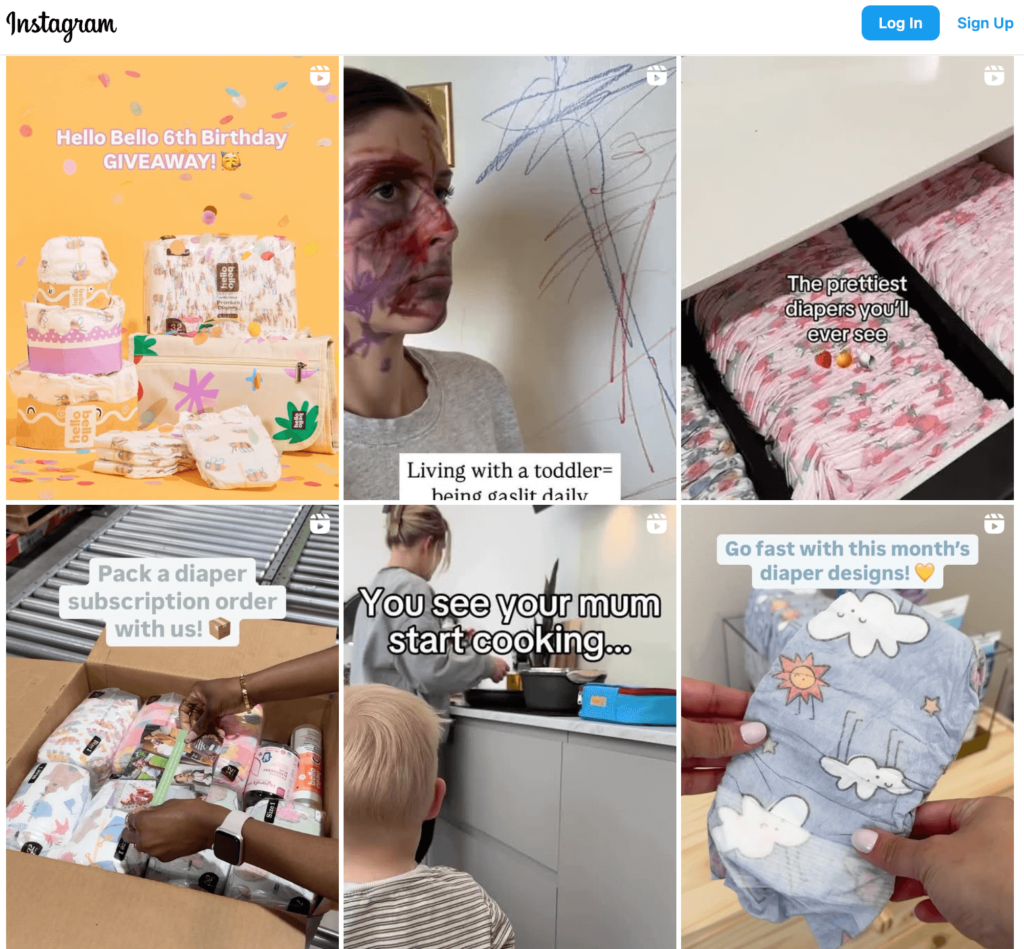
Dabble in influencer marketing
Two things need to happen before a customer buys your product: They need to know it exists, and then they need to believe that it’s worth buying. Influencer marketing can accomplish both at once by broadening your reach and adding credibility. Look around for credible influencers within your industry and see if you can partner with them on a social media campaign.
Make your posts shoppable
Boosting sales is all about removing friction from shopping. There’s no better way to do that than with shoppable posts (built right into platforms like Instagram and TikTok) that show off your products, then let customers buy them on sight.
Upgrade your ecommerce store with a smooth UX
User experience (UX) has a huge impact on sales—it’s how customers navigate your ecommerce site and buy your products at all. Removing friction from the shopping journey is a surefire way to boost sales.
Optimize for mobile
76% of ecommerce traffic comes from mobile users. That’s not a new phenomenon, so by now any brand should be monitoring mobile load times and designing responsive websites that work on any device. And don’t shy away from adding mobile-first touches to your online store, like vertical videos or swipeable media.

Expand your payment options
In addition to traditional credit cards, digital wallets like Apple Pay and Google Wallet have become ubiquitous both online and in physical retail (not to mention online-only ones like Shop Pay and PayPal). Try supporting a variety of payment options so each customer can pay the way they like.
Simplify sign-in
A lost password or a clunky account management process could mean the difference between repeat orders and a churned customer. One way to mitigate that is with passwordless sign-on, which uses methods like email verification to handle login.
Go even further by enabling customers to manage their accounts without even logging in, like via one-click order management buttons in account emails.
Your ecommerce growth strategy is step 1 to scaling
There’s no silver bullet for scaling your ecommerce store. Instead, steady growth and rising sales depend on a multifaceted strategy.
Make sure you’re bringing customers into your funnel by building a strong social media presence and investing in referrals programs. Then make sure each customer has ample opportunity to convert by delivering smooth shopping and checkout experiences. Finally, once customers have converted, make sure you have a plan to keep them engaged: subscriptions, loyalty programs, and personalized recommendations are great options.
With some careful planning and execution, you’ll be able to build a thriving ecommerce website.

